 When Swapna Liddle’s Delhi – 14 historic walks was made available by BlogAdda for book review I grabbed it because I wanted to ‘re-visit’ Delhi; and because I believe heritage walks are not just for tourists, but are also for the likes of me wanting to re-discover Delhi. And here I found a historian with a doctorate in 19th century Delhi to take me around.
When Swapna Liddle’s Delhi – 14 historic walks was made available by BlogAdda for book review I grabbed it because I wanted to ‘re-visit’ Delhi; and because I believe heritage walks are not just for tourists, but are also for the likes of me wanting to re-discover Delhi. And here I found a historian with a doctorate in 19th century Delhi to take me around.
Carrying, as I do, an emotional baggage of having spent my college, and early working life in the city, I admit to reading Delhi – 14 historic walks with tinted eye-glasses that had weathered 30 Delhi summers (1950-80s). And if, in Liddle’s 290 pages, I find the book leaves something to be desired, it is because of my rather high expectations. I expected the author to lead me by the hand while talking the walk, pointing things with anecdotes. I expected a story-teller to bring alive the ruins and tombs of nawabs and other nobility with tales, gossip and myths of their life and times.
I wasn’t totally disappointed, though. Diwane Khas at the Red Fort assumed a khasiat (added value) for me after reading Swapna Liddle , in the sense I visualized the emperor’s special court hall as the spot where Shahjahan suffered the indignity of getting deposed from the throne by his own son Aurangazeb. Among other nuggets from history that Liddle weaves in her historic walks was Mehrauli’s Metcalfe connection. Sir Thomas Metcalfe, British agent at the Mughal court in the 1840s, showed up as bit of a crank in the sense that he converted the first floor of Quila Khan’s tomb in Mehrauli as a retreat.
The Qutab Minar, widely known as symbol of the Turkish conquest of northern India, was seen by the Muslim faithful as a maznah, from where they gave the call to the faithfuls to come for prayer. Someone who could climb up the Qutab (72.5 m), and still have the stamina to call out to the faithfuls, must have had super-human lung-power. Hogwash ? Perhaps, but it made an interesting read.
The book made me wonder how Ballimaran got its name ; I had no occasion to learn, till I read Liddle, that Mirza Ghalib lived in a rented haveli that belonged to a neibourhood hakim. And that Delhi’s St.Stephen’s College was initially housed in a modest Chandni Chowk house in narrow lane called Katra Kushal Rai.
I wonder if sarkari tourism depts. realise the potentials of city walks. Walking tours are mainly done by NGOs and through individual initiatives. I have read about some city-loving San Francisco residents devoting their weekends to taking interested visitors on neighbourhood walks. Nearer home, the walks with which I am familiar, in Mysore and Mylapore (Chennai), are individual initiatives. The royal Mysore walks is the creation of a software techie who got bitten by the walkbug in Singapore. While on assignment abroad Vinay was so taken in by the Singapore city walk that he chose to return to native Mysore to start a heritage walk. Vinay’s business model has apparantly been successful enough for him to start a Mysore bike tour.
I wish his success drives him enough to try out walks for other interest groups – R K Narayan walk (of his haunts in the city), the Maharaja’s College walk, Kukrahalli walk (for bird-watchers), The Mysore Banyan Walk , Mandi Mohalla or the Agrahara walk. Speaking agraharam, my media friend Vincent D’Souza has been conducting walks centred on the agraharam in Chennai’s Mylapore.
INTACH with which the author is associated conducts the walks she writes about in her book. Her friend Surekha Narain, who acknowledges Swapna Liddle as a guiding force, is into conducting Surekha Walks devoted to the Ghalib trail, the Pahargunj bazar, and the 1857 Mutiny walk. I have a few walks ideas, triggered by my sense of Vintage Delhi. Would Surekha consider any of these ?
The Coffee-house walk: Starts from Janpath where the original coffee-house was located. When the India Coffee Board decided to close down its chain of coffee-houses in 60s, their employees, left in the lurch, were backed by the Delhi coffe-house regulars to form a workers’ co-op to take over the Board abandoned coffee-houses. When they faced eviction from Janpath, the workers union started the search for an alternative, with the support of coffee-house regulars – they included artists, academics, poets, journalists, politicians, lawyers, insurance agents, and students. Among the regulars were Inder Gujral and Young Turk Chandra Shekar. A joint agitation by coffee-house regulars and workers resulted in NDMC allotment of open space where Thambu coffee-house came to be located . So called because , the the coffee-house functioned under a tent. That was the space where Palika Bazar is now located. The workers’ coffee-house eventually moved to Mohan Singh Place, still in Connaught Place (CP).
Meanwhile, some regulars from my time (70s-80s) drifted away to other C P locations such as the United Coffee House, the Tea House in Regal Building. On a Delhi trip a while back I discovered a small band of old time regulars meeting at Connaught Circus Embassy restaurant. The group of coffee-regulars is sustained by my college friend S P Dutt (Barkha’s dad) – we have been coffee-house regulars since our days together in Hindu College, till our jobs took us away from Delhi. I left New Delhi in early 80s, for good. SPD, as friends call Dutt, returned to the city, re-connected with old-time regulars after retirement, and Embassy is where they meet nowadays. Out-of-towners , like yours truly, visiting Delhi can catch up with S P Dutt’s group at Embassy, on weekdays – ‘make it there, 11ish’, as SPD would say when you call.
Karolbagh Monday market: A weekly walk, on Monday, holiday for Ajmal Khan Road traders. It is on Monday pavement hawkers of all type take over the stretch from Pusa Rd. end to the Unani hospital. The pavement close to the Gurudwara Rd. crossing on Ajmal Khan Road would be of interest for pavement shoppers of used books.
Worship Walk, of 3 histoic temples, a gurudwara and a church. Could start from the Hanuman temple near Rivoli Cinema, Connaught Place; walk down Irwin Rd. to Gurdwara Rakhab Gunj; Continue the walk upto the Gole Post office, where there is a church; take a turn towards the Bird Rd. Kali Mandir, located on encroached pavement; and make your way to Birla temple on Mandir Marg via the heritage Gole Market.
The Mandir Marg Ridge: This walk could interest alumni of Mandir Marg schools, notably Harcourt Butler and Madarasi. Students living in Karolbagh used to walk to school through the ridge, picking along the way wild berries with sour-sweet taste, that grew on thorny bushes. The back-door ridge was also the escape route, notably for those who had running accounts at the Madarasi school front chai-samasa dukhanwala.
Delhi University Walk: For students in my times, who did cafe-crawling before, after, and, often, during class hours. University coffee-house, strategically located near the campus gate bus stop, was usually the place where students started their day. From here it is a few minutes walk to the Miranda House cafe, so named because of its proximity to the noted women’s college hostel. And then there was Wenger’s, an upscale cafe near the university library, conveniently located for students meeting for ‘group study’. After the study session at Wenger’s day-scholars take a walk with hostellers to catch the bus home, from the Miranda House stop. The 8 pm bus to Kashmere Gate, Daryagunj and beyond that passed by Miranda House was widely known among students as Ashiq Special. 8 p m was when the women’s hostel gate closed for the day.
Filed under: Blog, Blogger, Books, Chennai, Coffee house, Delhi, Muslim, Mysore, Reading, Temple, Tourism, University, Women | 1 Comment »
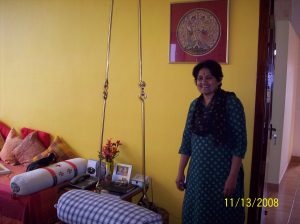 It has been a while since I heard from my friend and blogger Kalyani in Ooty. So it was a pleasent surprise, when I got a mail from her the other day, in her avatar, as secretary, Siragugal.
It has been a while since I heard from my friend and blogger Kalyani in Ooty. So it was a pleasent surprise, when I got a mail from her the other day, in her avatar, as secretary, Siragugal.








 Amir Ahmad Alawi of Lucknow went on Hajj pilgrimage in 1929. It took him five months those days; and he maintained a diary of the pilgrims progress on a daily basis. Alawi wrote, not for publication, but for himself, and for his circle of friends and relations. Had they invented the Internet eight decades earlier Alawi would have blogged his Hajj roznamcha.
Amir Ahmad Alawi of Lucknow went on Hajj pilgrimage in 1929. It took him five months those days; and he maintained a diary of the pilgrims progress on a daily basis. Alawi wrote, not for publication, but for himself, and for his circle of friends and relations. Had they invented the Internet eight decades earlier Alawi would have blogged his Hajj roznamcha.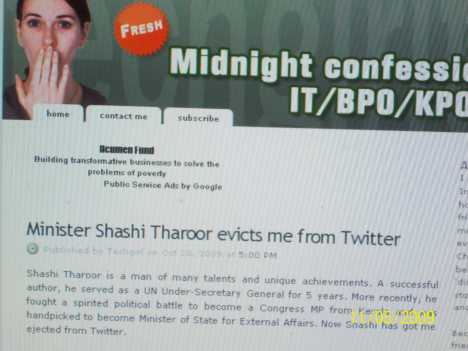
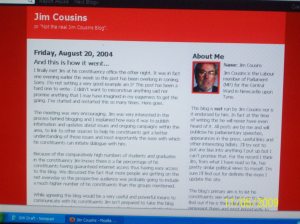
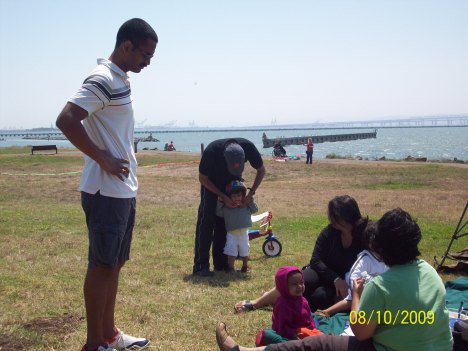 Her parents had asked us over to Berkeley Marina to picnic with 16-month-old Ila. On a clear day, they say, if you look hard, and far enough into the waters, you could even catch a glimpse of San Francisco Golden Gate Bridge from the spot where we picnicked. To be precise, the picnic invite was for my grandsons – Nikhil,18 months, and Sidharth,three years – and I tagged along, as live-in cheer leader, always at hand to marvel at their playfulness.
Her parents had asked us over to Berkeley Marina to picnic with 16-month-old Ila. On a clear day, they say, if you look hard, and far enough into the waters, you could even catch a glimpse of San Francisco Golden Gate Bridge from the spot where we picnicked. To be precise, the picnic invite was for my grandsons – Nikhil,18 months, and Sidharth,three years – and I tagged along, as live-in cheer leader, always at hand to marvel at their playfulness.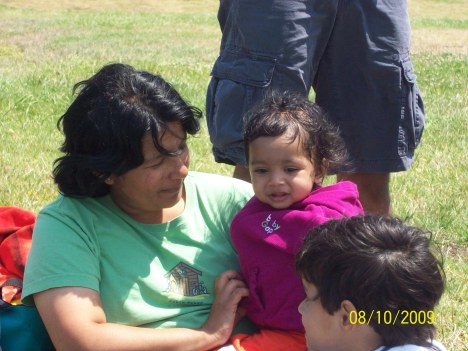 After scores of tests done on Ila and her parents Maya was chosen as the live donor of the left-lateral lobe of the liver.Dr.Waldo Concepsion came out of the examination room describing ‘how gorgeous Maya’s liver is’. Dr.Carlos Esquivel,who did the transplant, pronounced Ila’s ‘the sickest liver I have seen in a long time’. Of the team of surgeons Ila’s father had this to say – “I would gladly surrender my ego to these Gods and offer them my life long servitude if I did not know it would only embarrass them”.
After scores of tests done on Ila and her parents Maya was chosen as the live donor of the left-lateral lobe of the liver.Dr.Waldo Concepsion came out of the examination room describing ‘how gorgeous Maya’s liver is’. Dr.Carlos Esquivel,who did the transplant, pronounced Ila’s ‘the sickest liver I have seen in a long time’. Of the team of surgeons Ila’s father had this to say – “I would gladly surrender my ego to these Gods and offer them my life long servitude if I did not know it would only embarrass them”.